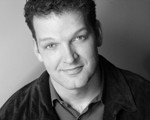
Ms. Kate O. McClanahan
Tax Policy Time: Take Two
Posted by Oct 22, 2014

Ms. Kate O. McClanahan
 Kate McClanahan
Kate McClanahan
If you saw my first post this week, Tax Policy Time: Who wants that?!, you’ll know that an entire bullet was saved for later discussion on tax treatment of donated artwork—perhaps another yawn-inducing subject to some, but wait until I tell you that it’s been said in Congress that there is nothing more permanent than a temporary pilot program, and nothing more temporary than permanent law. Despite the humor, a quick search of “permanent than a pilot program” turns up these truth-verifying headlines:
- “Redeploy Illinois, a pilot program to divert youths from incarceration in state facilities, will become a permanent state program”
- “Forage Seed Insurance Pilot Program to Become Permanent”
- “Arizona municipality to launch a permanent supportive housing pilot program”
Why is this relevant? Because in 1969 Congress permanently changed tax law to prohibit artists from being eligible to take a fair-market value deduction for their works donated to a museum, library, or archive. Many are now working to revert the law, including the Art Dealers Association of America and the American Alliance of Museums. Legislation is pending in Congress, and many have hope that “permanent” only means until Congress changes its mind—and are counting on that fickleness.
Read More











